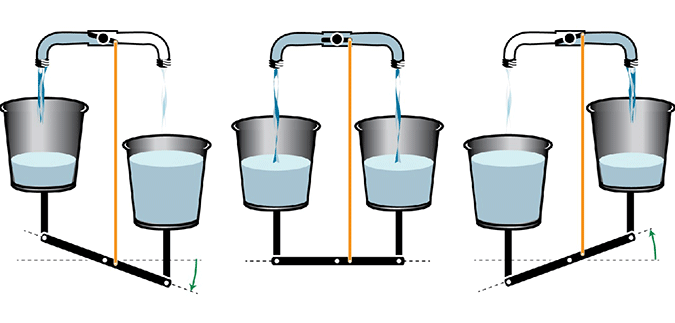When Philip Nelson couldn't find a textbook that suited the needs of his biophysics class, he didn't take any shortcuts—he wrote one. "I didn’t feel that there was a book that really spoke to physics students about why this subject might be interesting to them,” he says. “There was a gap there.” Physical Models of Living Systems was the result. It is designed to capture the unique intersection of biology, physics, and data manipulation, which often involves computer programming.
A textbook is a daunting proposition for any academic, one that involves putting other research on hold. You also have to manage expectations, says Nelson, whose first textbook, Biological Physics: Energy, Information, Life, has been translated into three different languages. “Like so many projects, I let it get to an advanced state before I told my local colleagues what was going on, just in case it proved to be a big flop.” In the early stages Nelson collaborated with scholars around the world, to get their expert opinion on his approaches. He also worked with specialized model makers and technical illustrators to visualize the science for students.
When it came down to pinpointing what kinds of materials were going to make it into the textbook, Nelson had a secret weapon: his own students. “I think it’s really important to teach a class a few times to see what works,” he says. “So many times I walk into the classroom, I give this very interactive class, and it’s quite different from what I had written. I then have to walk out and immediately rewrite it because there’s something that synthesizes on the spot under the pressure of talking to an audience.”
The field of biophysics is constantly evolving, says Nelson. Long ago, biology and physics—as well as the other scientific fields—were not considered distinct topics, but were instead referred to under the umbrella of “natural philosophy.” Today, that same level of narrow specialization has led to innumerable breakthroughs, but it often has the unfortunate effect of preventing interaction across fields. The weaving together of different approaches, however, can have very real practical applications.
Nelson cites the early days of the HIV epidemic as an example of physical modeling at work. In the beginning, anti-retroviral drugs appeared very promising, but one by one each drug eventually lost its effectiveness. “To some it seemed the only response was, ‘okay, that was the wrong drug, find another one.’ But instead, two interdisciplinary teams decided to step back, revisit some basic assumptions, and ask how the available data would look if those assumptions were changed.” One of those groups, headed by Perelman School of Medicine professor George M. Shaw (then at University of Alabama at Birmingham), proposed a new, simple model of virus dynamics and devised an experiment to test it quantitatively. “It turned out that HIV was evolving inside each individual patient,” says Nelson, “an insight that rapidly led to the current triple-drug-therapy that has been used ever since.”
Nelson, who jokes he’s been at the University for “just 27 years,” says it’s Penn, and its physics department in particular, that has offered him the extraordinary freedom to grow his career in such unique directions. “When I came here, I was a superstring guy. And I said to the chair, ‘Wow, you have a course on the general theory of relativity on the books which hasn’t been taught for ages. Could I please do it?’ And the answer was, ‘Oh, sure, give it your best shot.’ And that’s a great feature of my department: You have an idea, you pitch it, and they typically go for it.”
Nelson is constantly scanning the scientific world for new and exciting developments. An ongoing revolution in optical methods like super-resolution imaging—the technology associated with the 2014 Nobel Prize in Chemistry—is a hot topic among his students. “They come to me and say, ‘Nobody in our lab knows how it works.’ So I find a way to address it at a level appropriate to that audience,” says Nelson. It’s those same interactions with students that inspire Nelson every day. “I surveyed everyone who took Physics 280—the course the textbook was based on—over the past 7 years, and was frankly amazed at the high response rate and how many of the students immediately recollected the material,” says Nelson. “They tell me they are utilizing the skills we covered in the course in their current careers. For me, that is the best indication that I gave them something valuable.”
Below, view examples of some of the physical models from Nelson's new textbook, as well as a timelapse video of cell division in a frog embryo.

Professor Nelson uses a pyramid model like this one in class in order to represent the four "faces" of biophysics: words, pictures, formulas, and code. The sum of the four parts: data. (From P Nelson, Physical Models of Living Systems, W H Freeman and Co., 2015).

An example of a mechanical oscillator. When an imbalance causes the balance beam to tilt, the inlet nozzle changes the flow to correct it, a simple example of negative feedback. (From P Nelson, Physical Models of Living Systems, W H Freeman and Co., 2015).
Timelapse video of cell division in a frog embryo. The overall size of the embryo is about 1 mm diameter throughout the video; the actual duration of each division cycle is about 25 min. Video micrograph courtesy Tony Yu-Chen Tsai.


